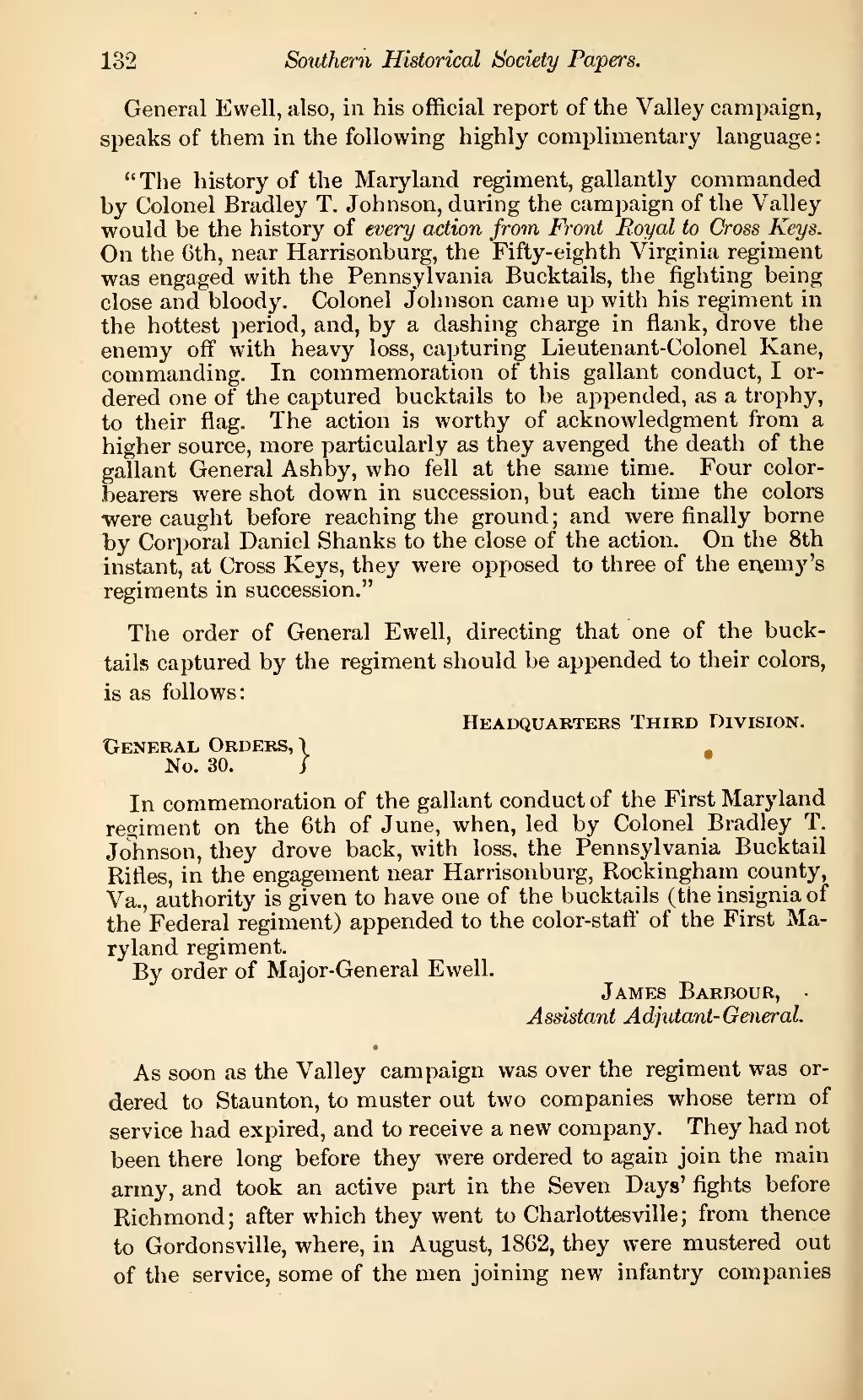General Ewell, also, in his official report of the Valley campaign, speaks of them in the following highly complimentary language:
"The history of the Maryland regiment, gallantly commanded by Colonel Bradley T. Johnson, during the campaign of the Valley would be the history of every action from Front Royal to Cross Keys. On the 6th, near Harrisonburg, the Fifty-eighth Virginia regiment was engaged with the Pennsylvania Bucktails, the fighting being close and bloody. Colonel Johnson came up with his regiment in the hottest period, and, by a dashing charge in flank, drove the enemy off with heavy loss, capturing Lieutenant-Colonel Kane, commanding. In commemoration of this gallant conduct, I ordered one of the captured bucktails to be appended, as a trophy, to their flag. The action is worthy of acknowledgment from a higher source, more particularly as they avenged the death of the gallant General Ashby, who fell at the same time. Four color-bearers were shot down in succession, but each time the colors were caught before reaching the ground; and were finally borne by Corporal Daniel Shanks to the close of the action. On the 8th instant, at Cross Keys, they were opposed to three of the enemy's regiments in succession."
The order of General Ewell, directing that one of the bucktails captured by the regiment should be appended to their colors, is as follows:
| Headquarters Third Division. | ||
| General Orders, No. 30. |
||
In commemoration of the gallant conduct of the First Maryland regiment on the 6th of June, when, led by Colonel Bradley T. Johnson, they drove back, with loss, the Pennsylvania Bucktail Rifles, in the engagement near Harrisonburg, Rockingham county, Va., authority is given to have one of the bucktails (the insignia of the Federal regiment) appended to the color-staff of the First Maryland regiment.
By order of Major-General Ewell.
James Barbour,
Assistant Adjutant-General.
As soon as the Valley campaign was over the regiment was ordered to Staunton, to muster out two companies whose term of service had expired, and to receive a new company. They had not been there long before they were ordered to again join the main army, and took an active part in the Seven Days' fights before Richmond; after which they went to Charlottesville; from thence to Gordonsville, where, in August, 1862, they were mustered out of the service, some of the men joining new infantry companies

